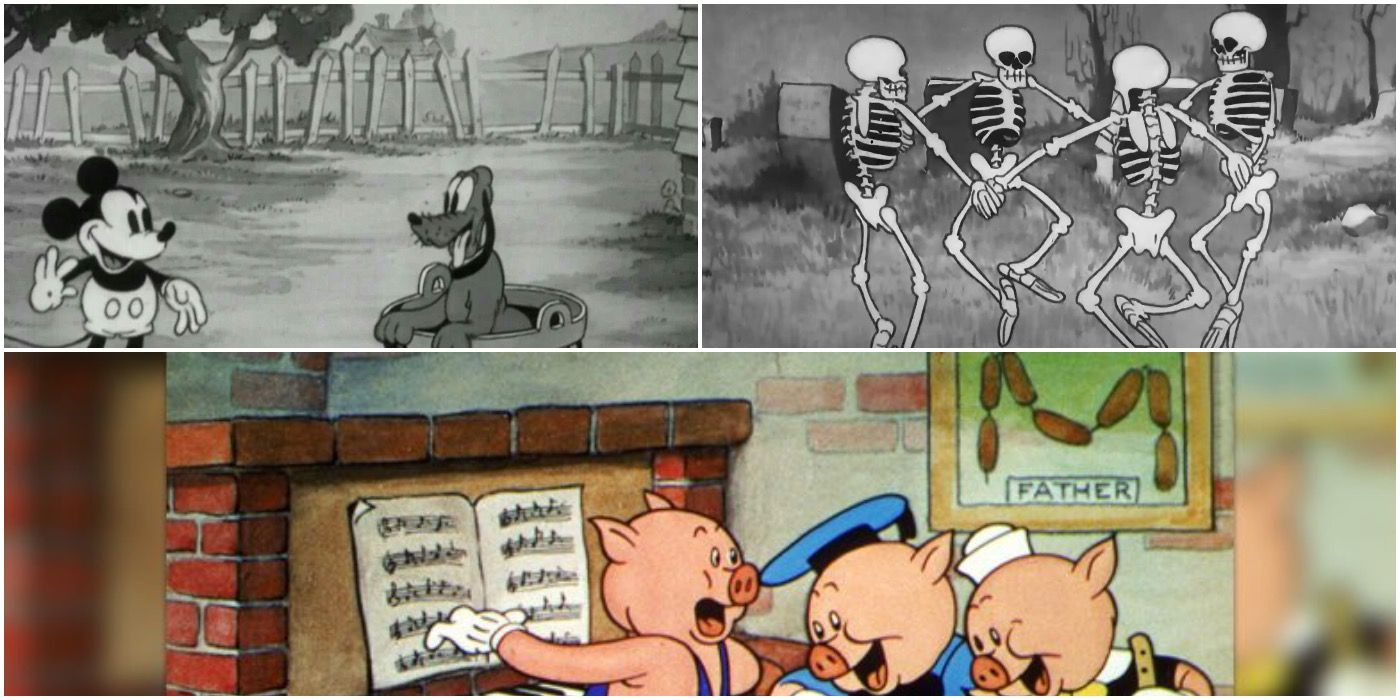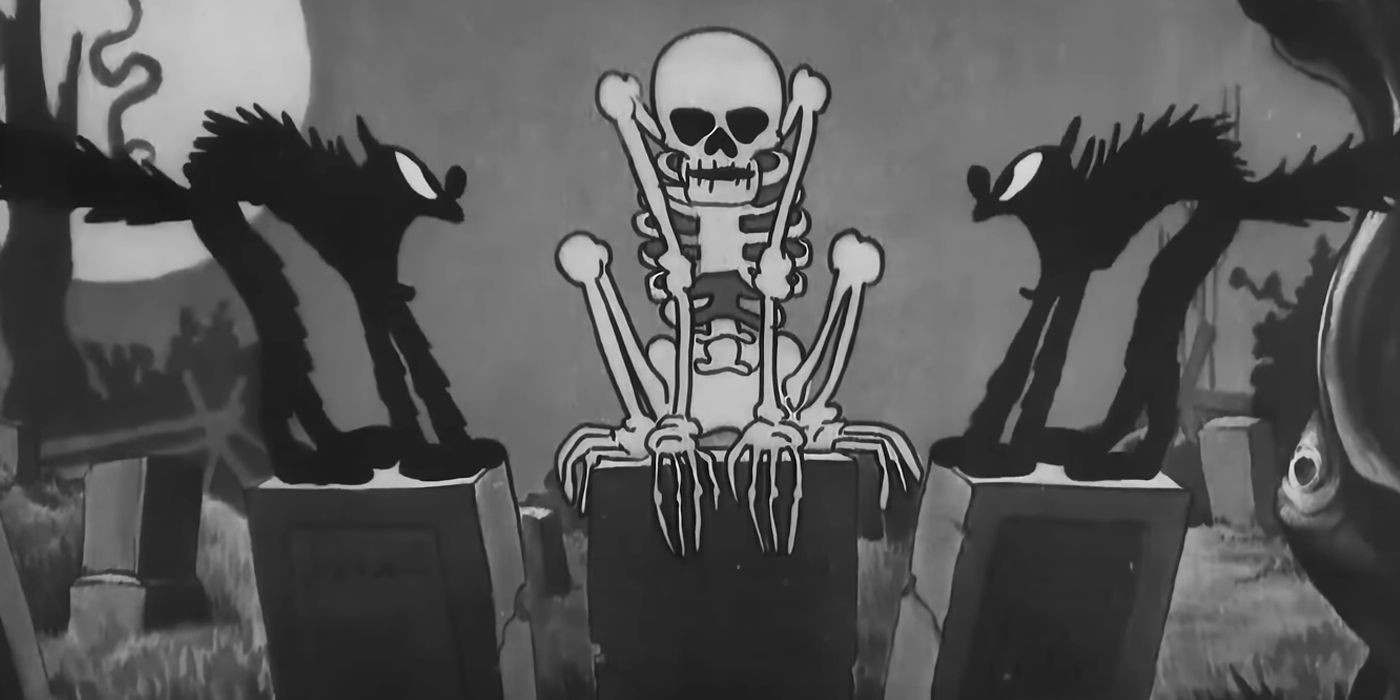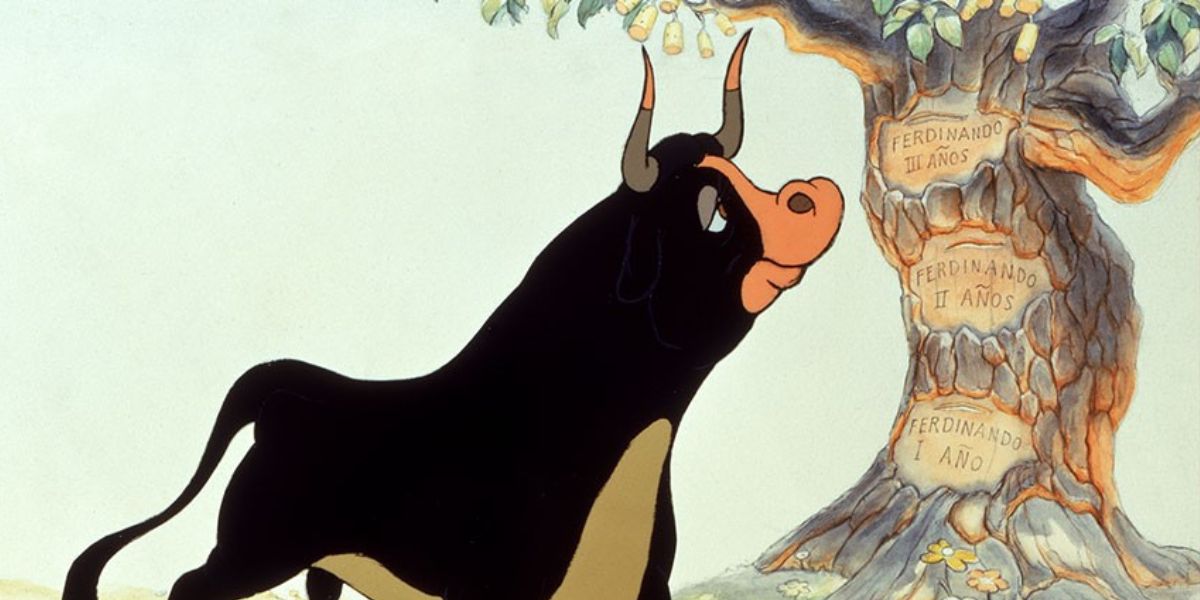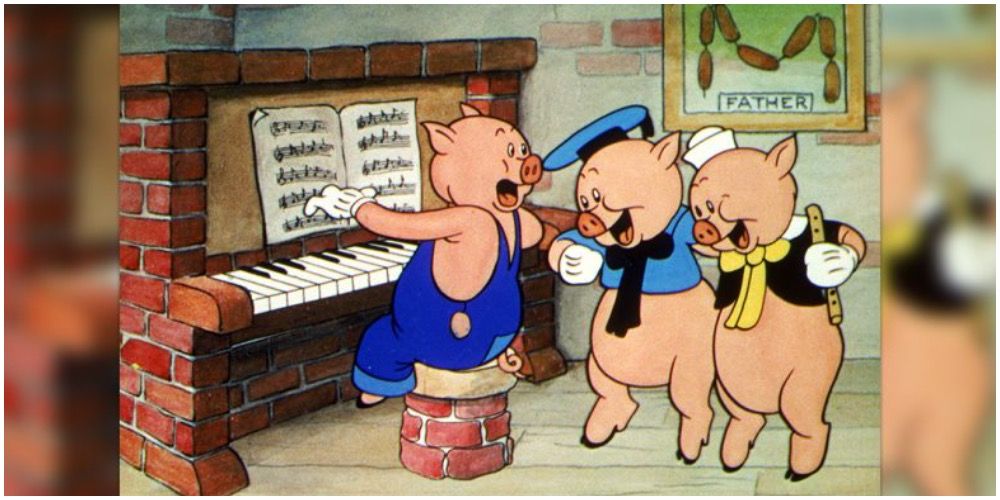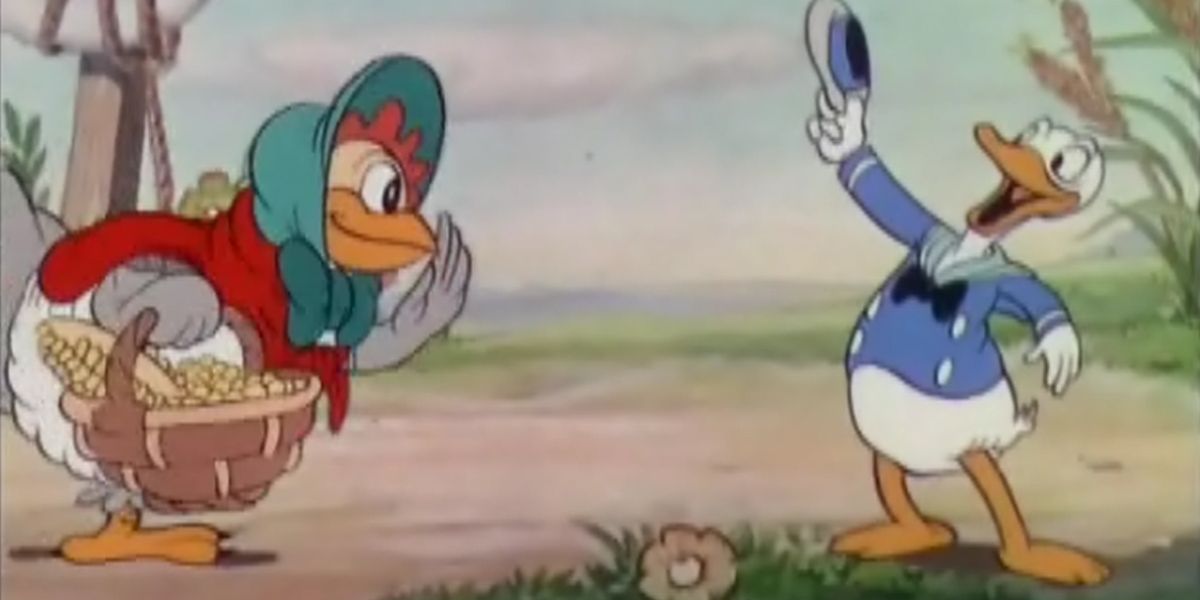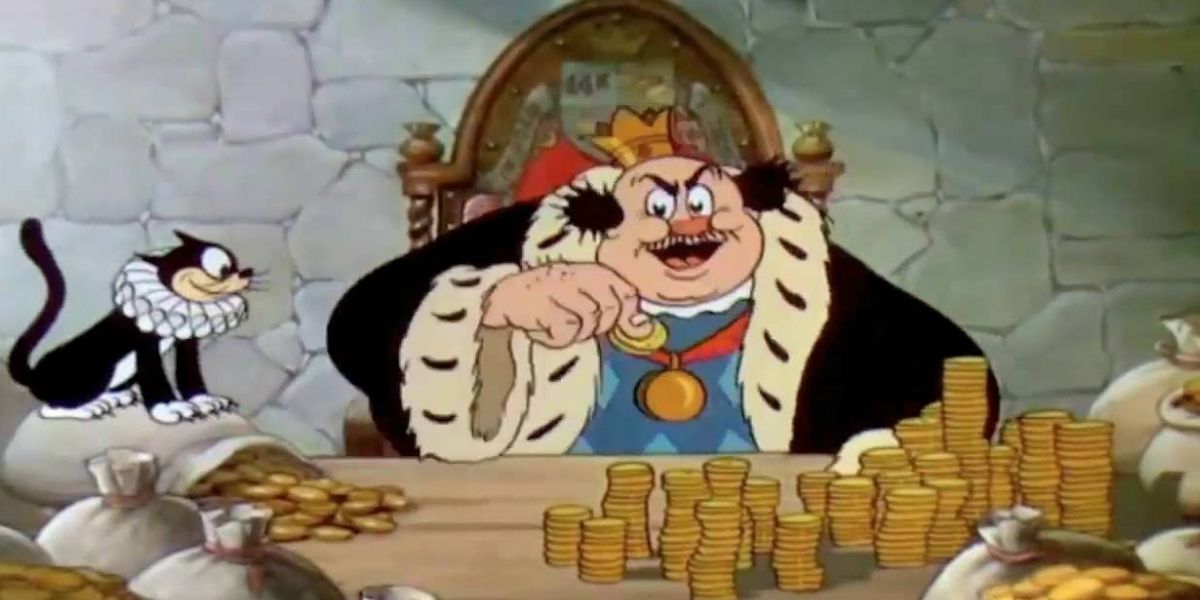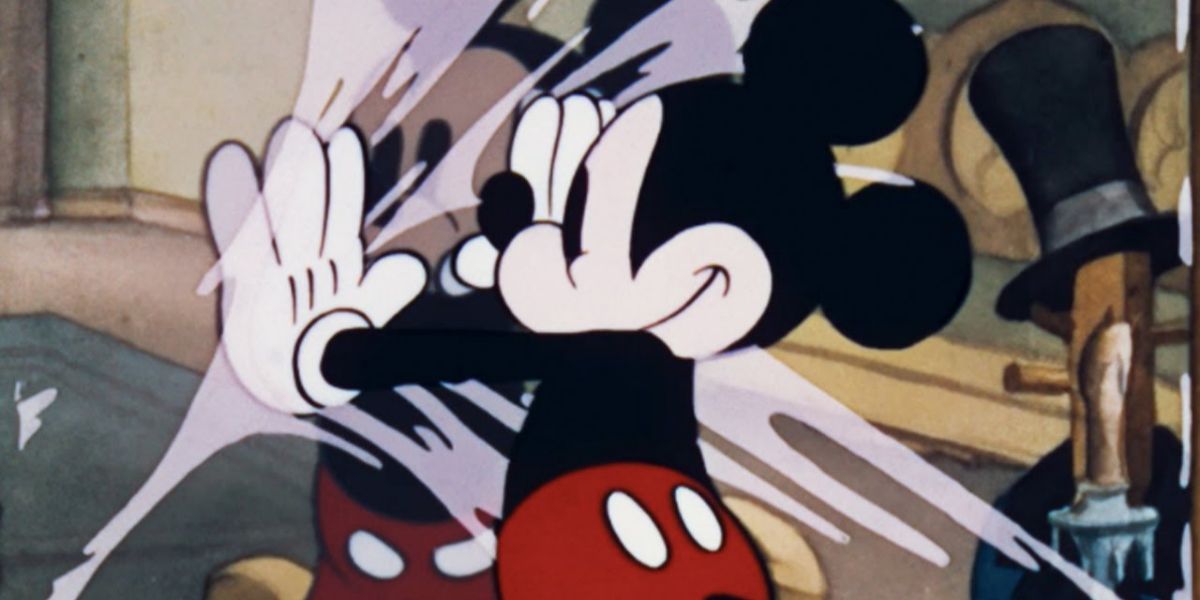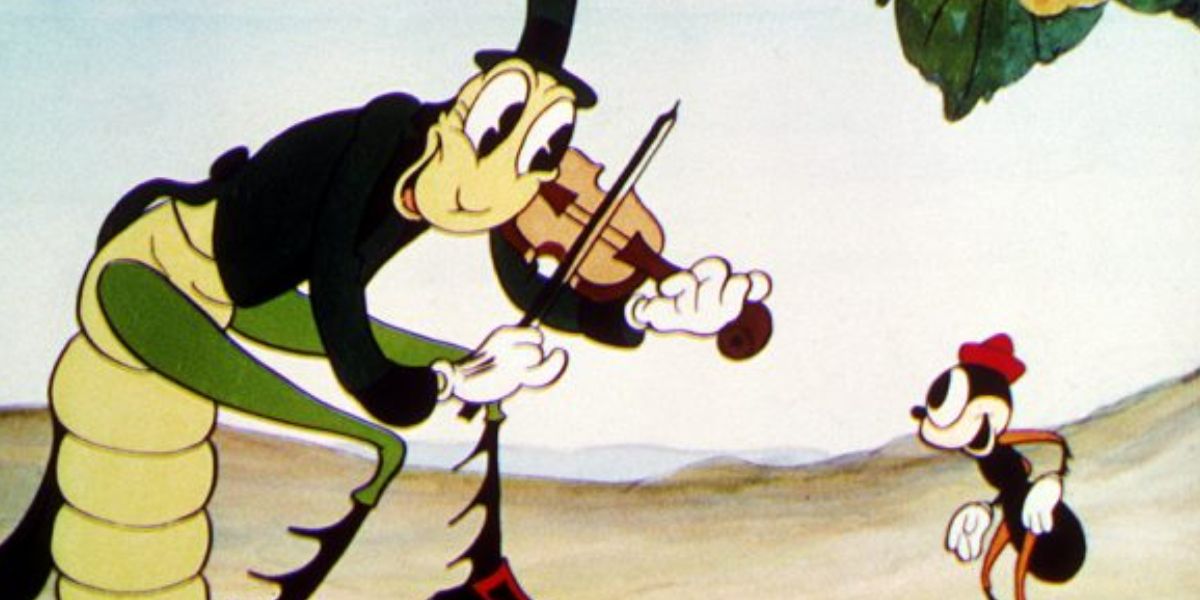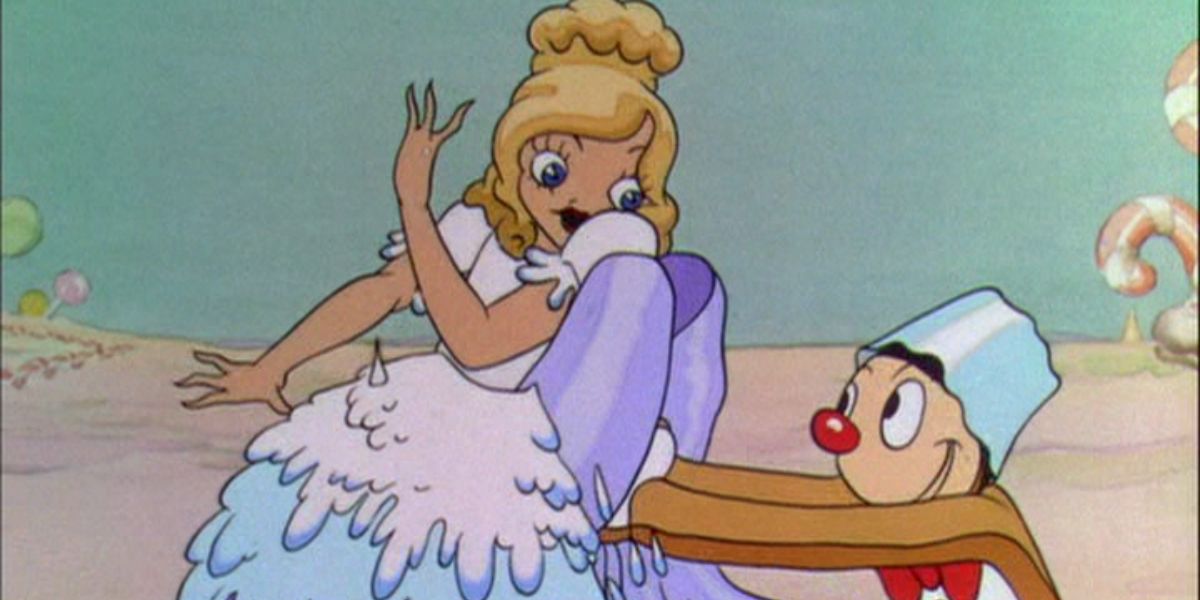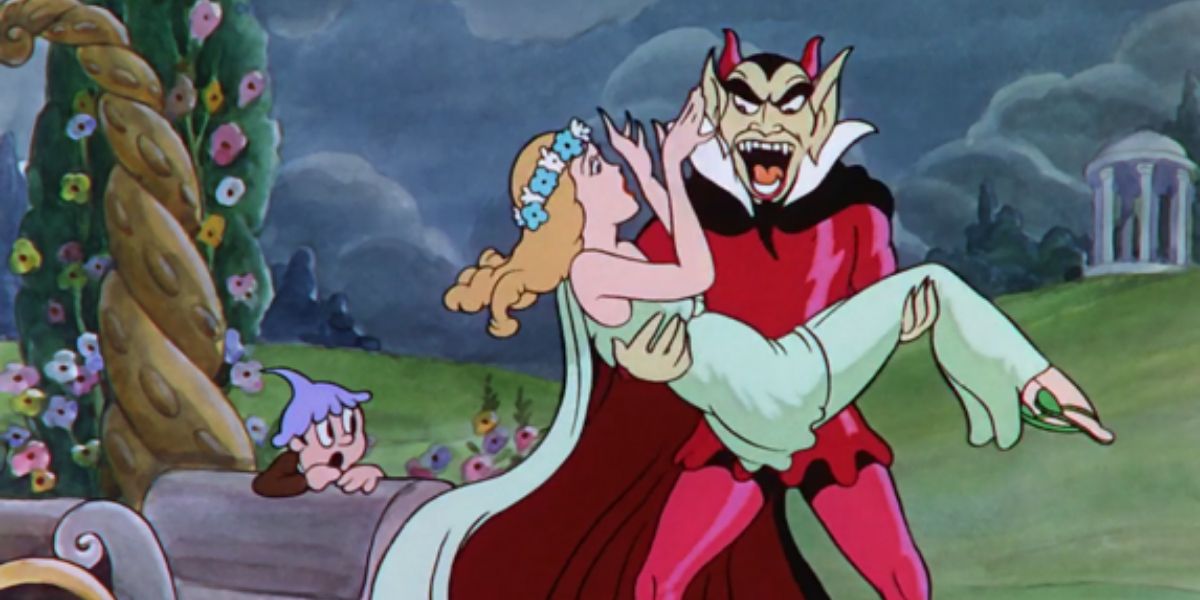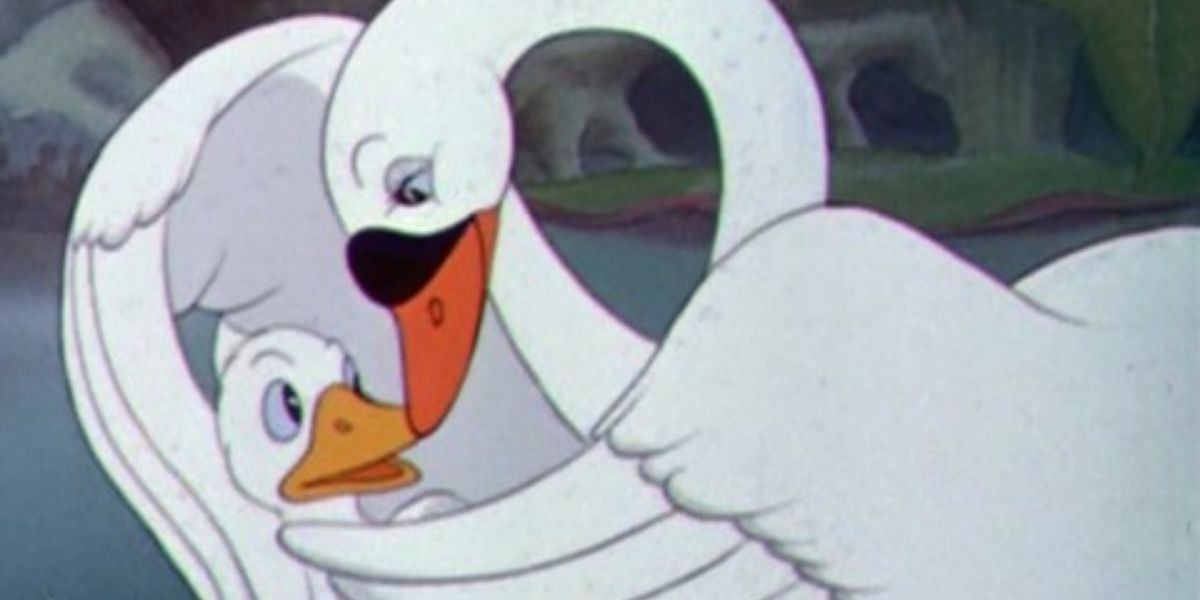Disney might be more famous for its full-length animated feature films, but some of Disney's earlier animated shorts also deserve attention from fans. Many of these shorts also set precedents for what Walt Disney's Animation Studios would become well-known for. They even give certain Disney characters their big break.
Some were episodic stories revolving around characters like Mickey Mouse and Donald Duck. Others included adaptations of classic myths, fables, and fairy tales. While many of the shorts would have color and dialogue, even some of the early dialogue-free, black-and-white shorts can still be impressive to watch.
10 The Skeleton Dance (1929) - Disney Proved Early On It Could Be Scary
In the first of the Silly Symphony series, The Skeleton Dance was inspired by the Medieval dance - "danse macabre." The Skeleton Dance is a spooky short that features skeletons rising from the grave, dancing around, and spooking some of the local animals. Ending on a humorous note, the skeletons all end up mashed together before returning to their grave.
The Skeleton Dance might be a little too macabre for younger viewers. In fact, it's claimed The Skeleton Dance was banned in Denmark over its content. Nonetheless, The Skeleton Dance still holds up as a humorous short.
9 Ferdinand The Bull (1938) - Disney Had A Crack At The Story Long Before The 3D Film
Based on the 1936 book, The Story Of Ferdinand, this animated short revolves around a young bull who doesn't enjoy fighting like the others do. The titular bull just wants to smell the flowers, even after growing up and having to face a matador. In 2017, The Story Of Ferdinand would also inspire a feature-length 3D film, Ferdinand, from 20th Century Fox Animation and Blue Sky Studios.
8 The Three Little Pigs (1933) - This Short Even Had A Few Sequels
Long before Disney became known for adapting fairy tales into feature-length films, The Three Little Pigs was the basis of an animated short. The Three Little Pigs followed the now-famous story of three porcine brothers trying to escape a hungry wolf.
Disney has a reputation for making the dominant retellings of adapted stories, and The Three Little Pigs is no exception. While probably not the first to do so, The Three Little Pigs popularized the idea of the first two pigs running away to their brother's brick house. In older versions, the wolf just ate them. The Three Little Pigs was also popular enough to get a few follow-up shorts, also setting a precedent for Disney's animation.
7 The Wise Little Hen (1934) - This Short Marks The First Appearance Of Donald Duck
The Wise Little Hen is an adaptation of the fable The Little Red Hen. An important short in Disney's catalog, The Wise Little Hen features another character that left an impression on viewers, and would soon become an iconic and immensely popular Disney character.
Donald Duck first appears in The Wise Little Hen as one of the animals who refuses to help the titular hen. In fact, when The Wise Little Hen was later adapted into a comic, Donald was replaced. Disney was felt he was too famous for such a small part.
6 The Golden Touch (1935) - A Surprisingly Faithful Take On The Classic Story, With Onions
The Golden Touch is a retelling of the Greek myth, albeit set in Medieval times. An elf grants King Midas the ability to turn whatever he touches into gold. Upon realizing he'll never get to enjoy food again, and has probably cut his life span short, he's happy to give everything up for a burger with onions.
Considering Disney's reputation for censoring old stories, there's some irony that The Golden Touch actually follows the classic myth. The Golden Touch shows that the dangerous risk of starving himself was enough to convince Midas of the danger of his wish. Scholars believe the later version, where Midas accidentally turns his daughter to stone, was a modern addition to the plot.
5 Thru The Mirror (1936) - Mickey Mouse Takes A Page From Alice
In the animated short Thru The Mirror, Mickey Mouse falls asleep while reading Through The Looking-Glass. Mickey has a dream that sees him go through the mirror to another world, filled with living furniture and dancing cards.
Despite holding up well, some of the pop culture jokes might be lost on modern viewers. Unless audiences are already fans of nostalgia and old cinema, like Mickey's Fred Astaire-style dance or the Greta Garbo-esque Queen of Hearts, Thru The Mirror might not be as funny.
4 The Grasshopper And The Ants (1934) - The Animated Short That Endorses Funding The Arts
The Aesop fable is given the Disney treatment in The Grasshopper And The Ants. A frivolous grasshopper spends the autumn playing music while the ants store food. Unlike the original fable, the ants end up pitying the grasshopper and let him share in their good fortune, as long as he plays music for them.
While this change was probably done to give The Grasshopper And The Ants a happy ending, it has aged well over the years. This addition is now seen as an endorsement of funding artists rather than writing them off.
3 The Cookie Carnival (1935) - An Atlantic City Cinderella Story Acted Out By Cookies
Set in a world filled with animated cookies, cakes, and other baked goods, The Cookie Carnival follows a friendless cookie girl who wants to take part in the titular carnival. A helpful gingerbread man grants her wish by dressing her up so that she is chosen as the Cookie Queen. As the Cookie Queen, she gets to choose her king. After going through a few applicants, her king ends up being the helpful gingerbread man.
The Cookie Carnival is infamous for one little quirk: the Cookie Queen seems to become a three-dimensional human midway between her makeover. On the other hand, effectively making her a precursor to Disney's later heroines, she could even be Snow White.
2 The Goddess Of Spring (1934) - Greek Myth's Most Famous Couple Got The Disney Treatment
Similar to The Golden Touch, The Goddess Of Spring was also an early adaptation of a Greek myth, this time Hades and Persephone. Cutting out the other gods, a benevolent Goddess of Spring rules the Earth until she is captured by the demonic Pluto.
Despite his Satanic appearance, he isn't completely evil. Pluto allows her to return to Earth for half the year, effectively creating the seasons. Given how much criticism Disney's Hercules received for making Hades the villain over Hera, it's surprising this early adaptation didn't make Pluto such a bad guy after all.
1 The Ugly Duckling (1939) - This Was The Final Silly Symphony
Disney's final shorts in the Silly Symphony series was an adaptation of Hans Christian Andersen's The Ugly Duckling. The titular duckling's sufferings in Disney's The Ugly Duckling are short-lived compared to the original story, as the duckling ends up adopted by a loving mother swan.
The Ugly Duckling must have left an impression on some of the Disney animators, as it was adapted into a book in the 2002 Disney film Lilo & Stitch.

